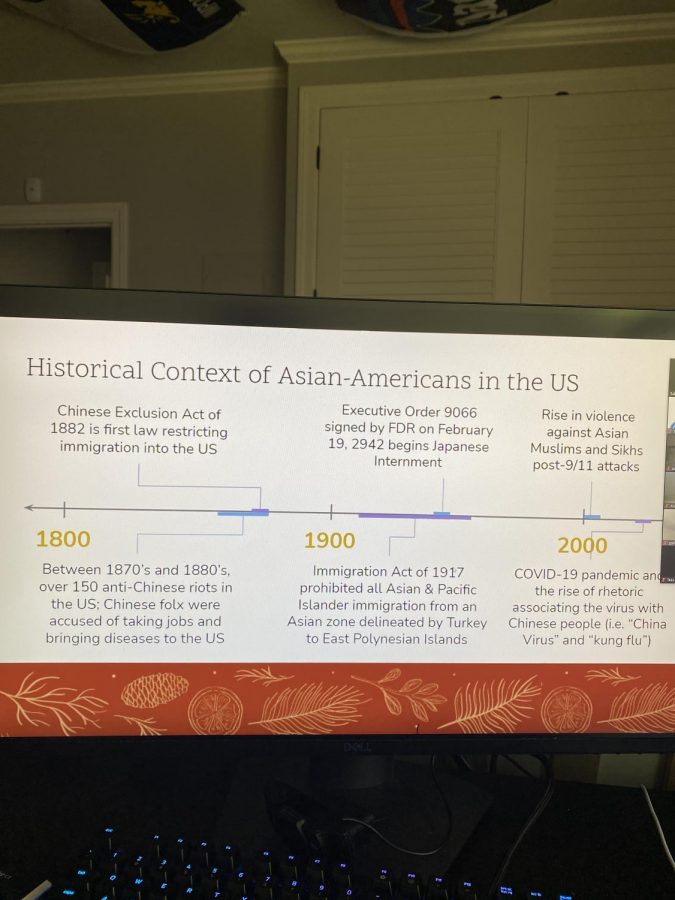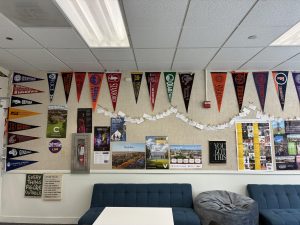Wellness Center Hosts Zoom to Give Support During Recent Asian American Hate Crimes
March 27, 2021
In response to the recent increase in anti-Asian hate crimes as well as the March 16 Atlanta massage parlor shooting which claimed the lives of eight people, including six Asian women, Acalanes and Miramonte Wellness Coordinators Allen Choi and Andie Nishimi facilitated a district-wide Zoom for Asian students and staff. Although the purpose of the Zoom was to provide support for Asian-Americans within the district, anyone and everyone was welcome to attend. During the meeting, the 24 participants learned about the model minority myth and the context of anti-Asian hate throughout American history, and received the opportunity to share their own experiences regarding anti-Asian hate.
“It’s been very heartbreaking this past year seeing the increased anti-Asian sentiments as well as hate crimes,” senior Budae Chinzorig said.
“We are seen as the ‘good’ minority. Our past successes as a community are being weaponized against other people of color. Contrary to the model minority myth, we are not immune to being hurt,” Choi said.
The Zoom started with an explanation of the model minority myth which refers to the stereotype that Asians are all hardworking and intelligent. Thus, Asians are viewed as the “good” minority in American society. The myth stems from the fact that Asian-American households make a higher median income than their white counterparts.
The coordinators explained that as a result of the model minority myth, Asian-American hate crimes receive less coverage from the media. Only recently has the media started giving the Asian-American community more attention. “Perhaps it’s because these recent incidents have been more violent. These stories would be more likely to invoke a bigger reaction which is why the media has started to cover these incidents. Prior to the mainstream media picking it up, social media has been instrumental in spreading awareness,” Nishimi said.
In addition to the lesson about the model minority myth, Choi and Nishimi taught participants about the cyclical nature of anti-Asian sentiment throughout American history. They detailed the 150 anti-Chinese riots between the 1870s and 1880s, the Chinese Exclusion Act of 1882, and the Japanese internment.
“I can confidently say that history is repeating itself. This country has a history of scapegoating minority groups. An example would be the Chinese Exclusion Act, passed to restrict Chinese immigration due to fears that Asians would steal jobs. Similar to what has been happening recently, Asian-Americans back then were receiving blame for absolutely no reason,” Chinzorig said.
Choi and Nishimi finished the meeting with a feedback survey and a pledge to maintain an ongoing dialogue in order to make Asian-American students and staff in the district feel safer. There will be more Zooms in the future to provide support for Asian-Americans within the district.








